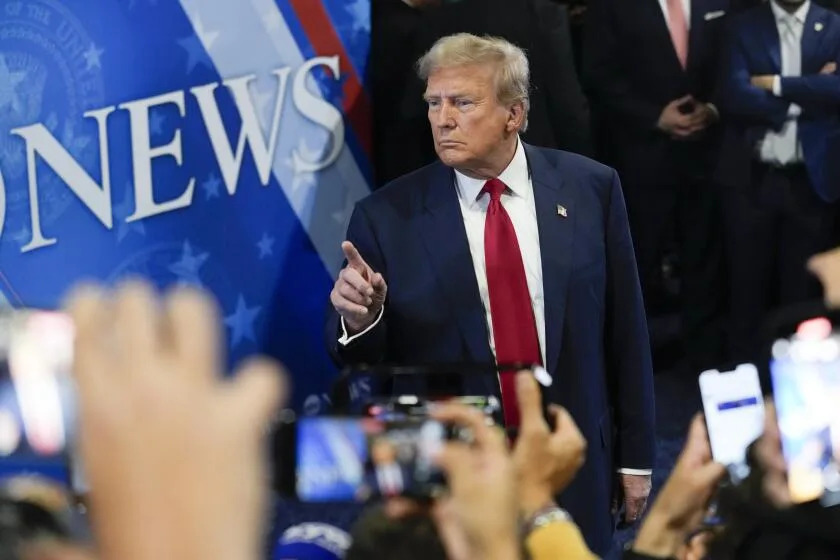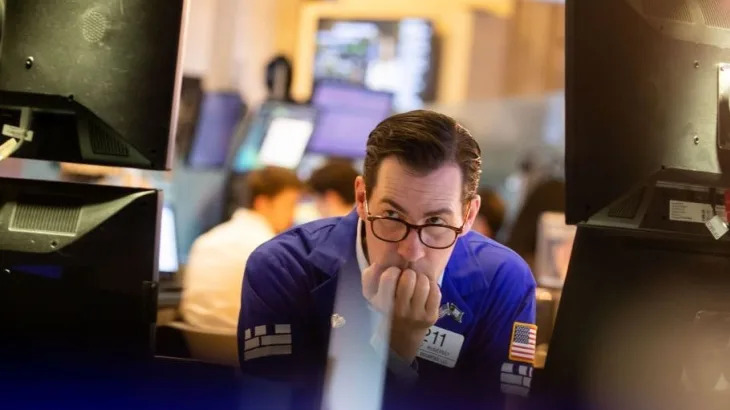(Bloomberg) -- Several measures of stock market health suggest that Monday’s sudden slump was in fact mostly an isolated hit to the world’s biggest technology firms and AI-related shares.
The Nasdaq 100 slid 3% and Nvidia Corp. plunged 17% — shedding almost $600 billion in market value in the biggest wipe-out in history. That came as Chinese startup DeepSeek’s latest model shook the belief that only Big Tech with huge budgets can compete in the artificial intelligence field — questioning the investment case that has favored the biggest players with rich valuations.
Yet looking under the surface: a majority of S&P 500 stocks ended the day higher, with the Advance-Decline Index — which measures stocks rising minus those falling — showing a positive reading of 199 even as the US benchmark slid 1.5%. That was unprecedented over the past 20 years.
“The selloff so far has not been indiscriminate, with markets distinguishing between winners (software) and losers (semis),” Barclays Plc strategists led by Stefano Pascale wrote in a note. “However, the high concentration of US equities translated into large losses at the index level.”
In another sign that the selling was contained to only the largest technology stocks in the US, the S&P 500 Index Equal Weight Index closed the day little changed. Even in Europe, benchmarks like the Stoxx 600 and Germany’s DAX are back to hovering around records.
Future and cash trading volume spiked with the S&P 500 Composite Turnover Index reaching one of the highest readings outside of an options expiry. Yet trading desk activity does not seem to reflect a market in the state of sell it all. “Our floor was a 7 on a 1-10 scale in terms of overall activity levels,” wrote the traders at Goldman Sachs Group Inc.
Follow The Big Take daily podcast wherever you listen.
“This is why you build a diversified portfolio. It’s not great to have the the entirety of your capital in seven names because things like this can happen. Disruption happens,” Steve Chiavarone, head of multi-asset solutions at Federated Hermes said on Bloomberg TV. “Value stocks look a heck of a lot better, and the small caps look a heck of a lot better, and you only need a roof when it’s raining.”
In terms of downside hedging and risk-off indicators, the VIX Index quickly reversed from a 7 point spike to close only 3 points higher. The gauge’s future curve changed only moderately and is not suggesting any notion of deeper market unease, beyond the elevated level that persisted since last summer.
The market action suggests investors are accepting that cheaper AI will speed up its implementation and use cases but will hurt the richly-valued stocks which benefited the most over the past two years, leading the US stock market higher — like Nvidia.
“This does not mean that all that capex was for waste. The Jevons paradox will mean it’s put to more use,” Azeem Azhar wrote in his Exponential View newsletter. “There is still more room for technical innovation in AI, both to improve capabilities and efficiency.”
The heavy weight of big technology stocks on the S&P 500 might force investors to rethink their approach to passive investing or even call for a change to index rules to ultimately limit the impact of such large-cap shares.
DeepSeek remains “potentially concerning given SPX’s heavy concentration in companies with substantial exposure to the AI sector,” wrote the strategist at Tier 1 Alpha. “Coupled with several key economic events, including the first FOMC meeting under the Trump administration, add to a precarious backdrop for equities this week.”
--With assistance from Michael Msika.





